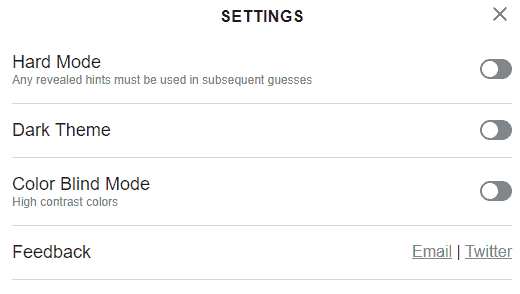What is Wordle? Guidance for parents
Wordle is a simple word game popular among adults and children alike.
See how it can support learning and fun with guidance below.

In this guide
What is Wordle?
Wordle is a daily word puzzle released in 2021 and bought by the New York Times in 2022. Every day, users must guess what the 5-letter word of the day is. When a player guesses the correct letter in the correct place, the square turns green. If they guess the correct letter in the wrong place, it turns yellow.
Players can share their results on social media to show how many tries it took for them to get the word. A series of green, yellow and grey square emojis represent each guess. This means users can show their results without spoiling the results for anyone else.
Users only get 6 tries to find the answer. If they do not guess the correct word within 6 tries, then their streak resets. For daily Wordle users, losing a streak can be very frustrating.
Why is Wordle popular?
The charm is in its simplicity. Users can only play once per day, which forces moderation. For those who tend to doomscroll or binge-play games, Wordle is a good choice to promote digital wellbeing.
Players can access the Wordle game directly on the web for free without needing to download anything. It has minimal settings: hard mode, dark mode and colour blind mode. Without any ads, it doesn’t encourage players to focus on anything other than the game.

What are the benefits of Wordle?
- Promotes word recall and vocabulary-building;
- There is a healthy culture around the game with heavy emphasis on not spoiling the day’s word for anyone else;
- The share function creates an active social media community when users guess a word correctly;
- It forces users to think critically about all possibilities. Guessing a five letter word is harder than it seems!
Things to watch out for
- Wordle imitators: App stores regularly remove Wordle copycats but more continue popping up. While they look and work like Wordle, they tend to collect data and information in a way that the original does not. So, a child might run the risk of sharing personal information or clicking ads for third-party content.
- Adult spin-offs: Adult spinoffs of the Wordle game also exist. These games might include words unsuitable for those under 18. Check that your child is using the correct version.
Other New York Times games
Following the popularity of Wordle, the New York Times expanded its offering of word games. Learn about some of these games below.
Connections
Released in 2023, Connections is a game where users must discover the four categories of the day. Like Wordle, there is one new puzzle every day.
Categories consist of 4 words. However, sometimes the puzzle features symbols or numbers instead. Each category has a colour (green, yellow, blue or purple) which also corresponds to the difficulty of the category.
Sometimes categories are difficult to find. For example, the words Ant, Drill, Island and Opal fit into the category, ‘Fire ____’.
You have four guesses before you lose the game. Similar to Wordle, you can share your results using coloured square emojis without spoiling it for others.
Strands
Strands was released in 2024 where users must find words that fit into the daily theme. If they find a word that doesn’t fit into the theme, they earn the ability to use hints.
A correct word stays highlighted in blue while incorrect words do not have a highlight. Within each theme, there is also a spangram, which is a word that starts on one side of the puzzle and ends on another. Spangrams stay highlighted in yellow.
Themes range from songs from a single artist to types of birds to sport teams. Sometimes themes coincide with a holiday or other event like the Academy Awards.
Unlike Wordle and Connections, you have unlimited guesses with Strands and only lose if you give up!
The Mini
‘The Mini’ refers to a ‘mini’ version of the famed New York Times crossword. Unlike the normal crossword, users can access The Mini for free.
As with all of the New York Times puzzles, players of The Mini can play a new puzzle each day. The weekday puzzle grid is 5×5 while the Saturday puzzle is 7×7. Sometimes users might get to play larger puzzles as a free bonus.
The Mini crossword is significantly easier than the regular New York Times puzzle. However, children might still struggle with some of the clues.
Letter Boxed
With Letter Boxed, users get a new square every day with 3 letters on each side. The goal of the game is to use every letter at least once by creating various words. Each day, there’s a new target to encourage users to complete a puzzle in a set number of words — usually four to six.
You cannot use letters on the same sides as each other, so consecutive letters are not possible. The game finishes when the players uses all letters. You have unlimited tries to complete the puzzle target, and can restart whenever you like.
Children might like this game because there is no way to lose. Even if you don’t hit the target, you can still complete the puzzle.